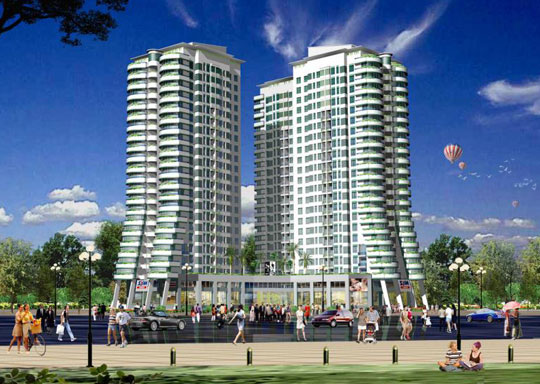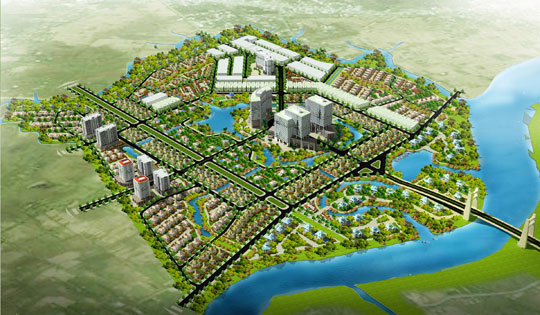Given that global cities are overloaded by high levels of CO2 emissions and high energy consumption, according to French architects, Ho Chi Minh City needs to invest in construction. green building.
On November 24, at the Energy-saving Design and Architecture conference in the building, French architect Albert Abut said the construction of dense buildings emitted a large amount of global CO2. Residents in buildings are suffering from rising energy costs. With this situation lasting, the world is facing an ecological crisis.
Albert Abut said: " The solution to the future ecological crisis is to build an energy-efficient green building. This construction makes the cost increase by about 25% of the total investment for the building but bring long-term effects ".
According to the architect, solutions for building green buildings are available in nature. He pointed out that, in each region with different climates and geographical areas, local people have different ways to build houses but are very suitable for the environment such as: having natural ventilation systems and systems. Classic but effective insulation and sound insulation.

Many architectural experts commented that the amount of green buildings in HCMC is still too thin.
Albert Abut added: " We are working on how to create a cover of the building to increase insulation, reduce air conditioning use, save energy and filter noise ."
Similarly, architect Olivier Souquet warns that buildings built too dense in big cities will not be able to guarantee ecological and energy factors. Souquet's view, the future green building needs to focus on two factors: using local materials and making the most of natural energy: wind, light, water for ventilation, lighting, cooling.
The architect Myriam Oliver said that in France, when building green buildings, the cost increases by 15% compared to normal buildings. However, these costs can be recovered when the building comes into operation because energy-saving systems will make the operation of the building more efficient and economical.
Myriam Oliver analyzed, to reduce noise and cooling buildings, investors need to pay attention right from the time of construction. The fact that insulating materials can also help reduce noise because of insulation and sound insulation are always intertwined.
Co-director of the Center for Urban Forecasting and Research, Fanny Quertamp Nguyen architect said that Ho Chi Minh City is heavily influenced by climate change so it is necessary to encourage investment in building green buildings. She stressed that the new approach for HCMC planners is to pay attention to climate change and energy efficiency.

One of the criteria of a green building is: efficient energy use, architecture harmonized with space and general planning, insulation, natural lighting, noise reduction and high creativity.
Ms. Fanny Quertamp Nguyen said that as a big city, the challenges that Ho Chi Minh City must solve in the coming time is the problem of rapid urbanization, the buildings racing together but there are not many green buildings. Moreover, Ho Chi Minh City has up to 60% of the land that cannot be built because of flooding or conservation.
Director of Ho Chi Minh City Energy Saving Center Huynh Kim Tuoc said that a " green " project using energy efficiently has many advantages that anyone wants to invest in construction. However, the biggest barrier is that the investment rate will increase by an average of 20% or even up to 40% for the expenses related to the field of electromechanical equipment. Another limitation, Vietnam lacks an experienced team of green building design consultants. It is necessary to have a financial support mechanism or preferential land policy for green building investors.
According to Tuoc, Vietnam currently has 2 trends of green building development. One is to build urban rural villages, transforming rural villages towards urbanization. Ho Chi Minh City is choosing a commune in Cu Chi district to implement. The second is the development of villages, industrial parks, ecological urban areas. These two trends are attracting many investors, developing very fast but still spontaneous. Currently, the standards of how green architecture is, Vietnam ecological architecture still has no specific criteria.
Mr. Tuoc said that the certification of the state due to compulsory standards of energy efficiency in the project is compulsory by the local Construction Department. The second is certification of green buildings, energy efficient buildings implemented by non-governmental organizations.
 Norway built the world's tallest wooden tower
Norway built the world's tallest wooden tower Kremlin
Kremlin Ashurbanipal: The oldest royal library in the world
Ashurbanipal: The oldest royal library in the world Decoding the thousand-year construction of Qin Shihuang shocked the world
Decoding the thousand-year construction of Qin Shihuang shocked the world